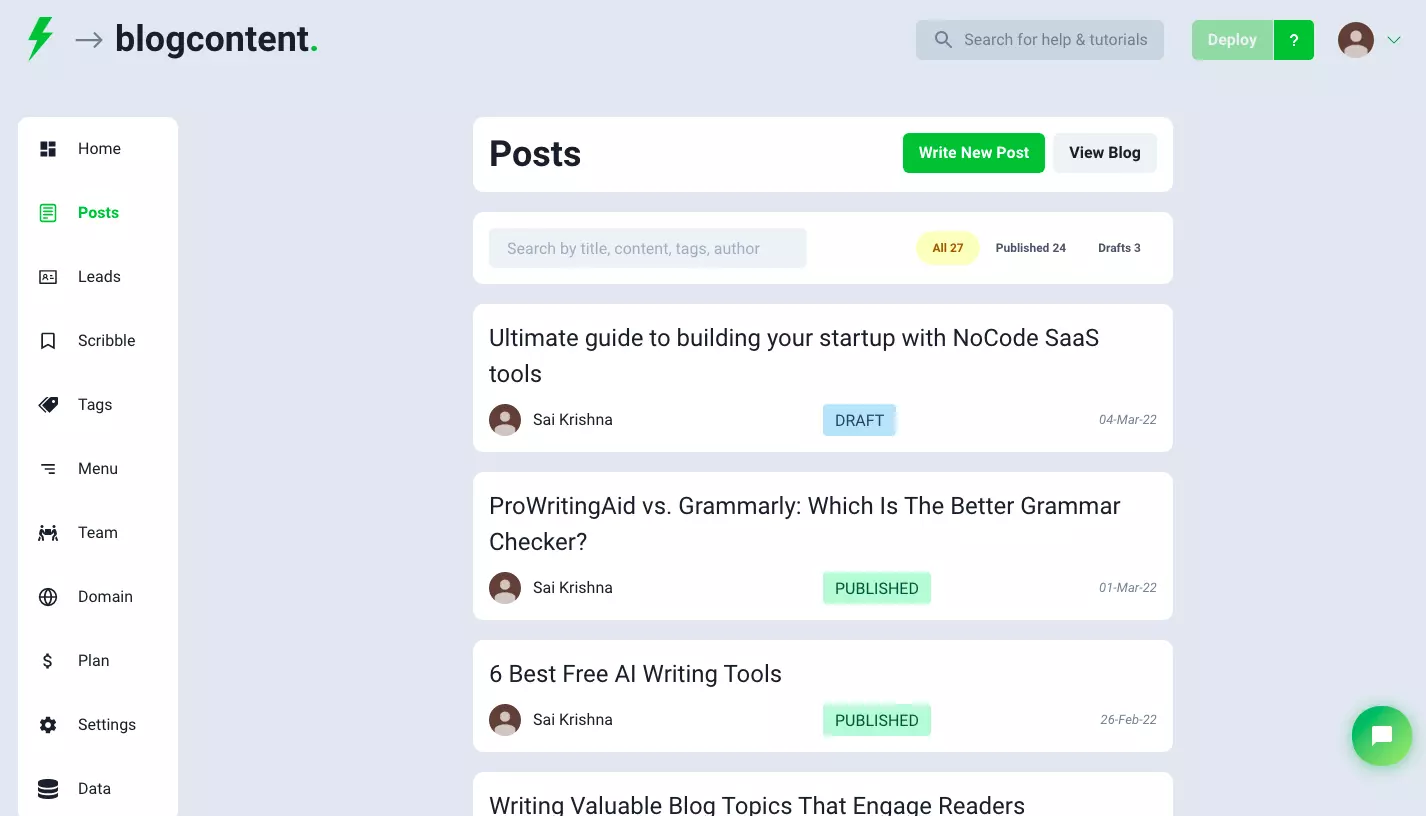How to add a blog to Shopify store: 3 Easy ways
Why should you set up a blog for your Shopify store?
If you are looking to grow in the e-commerce business, then you should have a blog for your Shopify store. Blogging is an essential part of any e-commerce site and it plays a major role in building an online community around your brand. An effective blog helps you grow your brand by becoming a trusted source of information and also helps you convert your site visitors into customers. If you are looking to setup a blog easily without additional efforts to manage a blog for your Shopify store, then this post is for you.
3 ways to setup a Shopify blog
1. Shopify native blog (free)
Shopify does have a default blogging engine. You can start writing posts from your same dashboard. It is the easiest way to start blogging on Shopify.
Activating your Shopify blog is easy. If you're currently logged in to the dashboard for your store, navigate to the "Posts -> Blog" section under your Storefront. Then click the "Add" button on this page to give your new blog a custom title (use all lowercase and no spaces), as well as add it to your navigation menu!
It seems really easy to get started on Shopify but you will need to make that blog is optimized for reading and SEO. Here are the steps:
- Choose a blog theme
- Optimize the content layout, post layout
- You can also create a custom blog template and then apply it to your blog.
- Add a lead-generation form to collect email addresses of your blog visitors.
- Add a "Call to Action" hook (of your store) to bring visitors to your store.
2. Superblog
Superblog is a simple and fast blogging platform that lets you focus on writing content instead of setup, maintenance, and optimization. It has strategically placed lead-generation forms, Call-to-Action hooks, and a highly optimized reading layout. Your blog is auto-optimized for speed, SEO, and design.


Features:
- Super-fast
- Highly optimized for reading and SEO
- Never worry about maintenance
- Connect your own domain
- Superblog branding is NOT shown
3. Medium.com
Medium is technically a publishing platform but you can connect your custom domain. The biggest advantage of Medium is that you won't have to worry about setup and maintenance. Plus, the reading experience is gorgeous.
However, there is the biggest disadvantage with Medium. They show heavy branding of their platform which you cannot disable. Also, there is no way to collect email addresses. A lead generation form is must and should be for businesses.
Conclusion
Every online store owner should have a blog in their store. It doesn't matter if your store is big or small, always have a blog. Leverage the power of your blog to promote your products and increase your sales by writing valuable topics that will engage your readers. So pick whichever platform suits your workflow and start writing!
